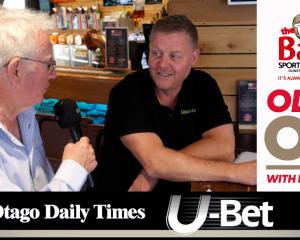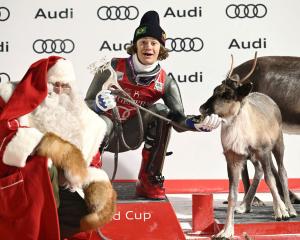
"[Sports predictions are] more something I do on the side," Auvray (40) said.
"I’m a statistician, I work part time at the university as well in the stats department. I’ve always been interested in predictions and sport predictions is a cool way to apply statistics."
The model uses past results to predict winners across a variety of sports. Auvray had predominantly focused on rugby, football and MMA. However, most recently he had used it to predict the under-20 division three ice hockey world championships held in Dunedin. It had proved successful there, predicting the winner of every game except for the final, which was an upset.
He said the model was "usually not too bad" and proved useful when it came to entering things such as work sweepstakes.
"We did a work sweepstake for the Rugby World Cup," Auvray said.
"Someone decided to do a Dutch auction where you bet some money to buy a team. If your team wins, or reaches a certain round in the competition, then you get the payout.
"I used the model to decide how much I should bet on each team and I ended up getting ... 50% of the money. I had the winner, the semifinalists, teams that were really cheap that got into the round of eight that no-one would have predicted. I think that was when people started taking me seriously."
While the model did not account for randomness, he said it was better than going by gut instinct.
"I follow MMA quite a lot and I make my bets based on the model.
"Sometimes stuff comes out of the model and I’m like ‘I can’t conceivably put money on that’. But if I don’t, I know I’ll regret it, because the model is usually much better than gut feeling.
"Models are really good at picking up margins. People usually underestimate or overestimate the strength of a team. Models can basically tell you exactly how often the margin is over 13."
Peyroux said it was something being used around the world for more serious purposes too.
"There’s been work on models in tennis and betting.
"So there’s models now when you can tell if someone’s been bribed to lose a game or something, because they should win certain games."
He said it was something that was becoming bigger and bigger, with probabilities being worked out for minute actions and decisions within games. The pair had said things such as figuring out the probability of a goal kicker making a shot from different places on the field in rugby would be of interest to them. It would be interesting looking at things such as whether a team was likely to score a try in the last five minutes when chasing a close game. They said those things could be useful to people and teams in the same way their business predictions were useful.
Peyroux speculated that in the future a game could be presented with probabilities of different occurrences flying around the screen throughout games. However, he said it was a matter of balance, ensuring probabilities did not take away from the unpredictability that in the end made sport exciting.











